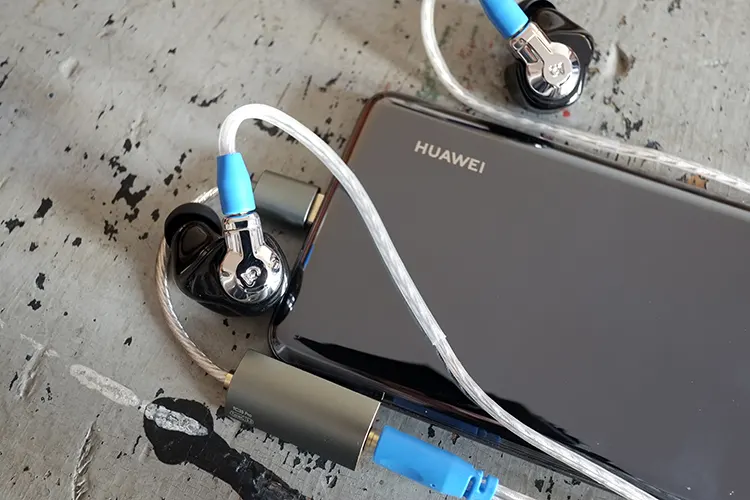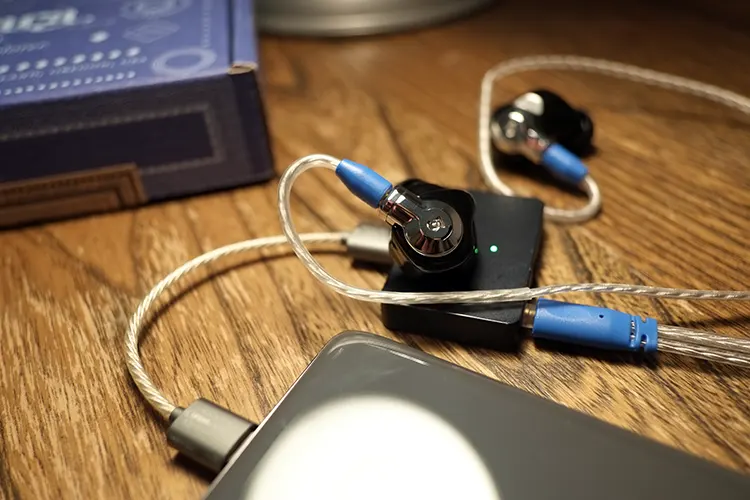Sound Impressions
Summary
Campfire Audio has made plenty of single-dynamic bass canons in the past, like the Atlas, Vega 2020, and Honeydew.
Instead of having a more traditional V-shaped signature like the above-mentioned models, Cascara shifts the emphasis. You still get well-extended, highly elevated bass and a bump in the presence region, but with a strong upper-midrange push that gives the Cascara a completely different vibe.
This tuning direction helps make the Cascara the most well-rounded, bass-focused earphone I’ve heard from Campfire Audio.
Bass
The Cascara’s low end has fantastic extension and provides a visceral experience that bass lovers will appreciate. Thankfully, the drop into the mid-bass region ensures only a small amount of bloat crops up, with very little bleed into the lower mids.
With the quantity of bass available, it would have been reasonable to expect a slow and sloppy presentation, but that’s not the case. The dual magnet system does an impressive job of keeping the diaphragms light, nimble, and articulate.
The initial note impact is crisp and well-defined with a quick decay to avoid smearing on busy tracks. Distortion is only present once you reach dangerously high volumes.
Texturing is also good, but micro-details on especially gritty basslines can be lost. This is a tradeoff for the smoothness and warmth of presentation, but one that feels appropriate for the tuning style.
Mids
While the Cascara will likely be thought of as a bass monster, and rightfully so, it has a sweet, forward mid-range that is unlike most other bass-heavy earphones I’ve heard.
Thanks to an upper-mid focus, vocals from the Cascara are considerably more prominent than on Campfire Audio’s past models. They are clear and articulate with a natural warmth, weight, and thickness to them.
There is plenty of detail and thanks to a dip in the 3k region, the presentation is not fatiguing. The exception is on tracks that already have a hot mid-range mastering, which the Cascara does little to mask.
Percussive instruments also benefit greatly from this tuning. The speed and snappiness of these dual magnet drivers leave drums sounding particularly satisfying.
Treble
Treble out of the Cascara has a presence region bias with minimal extension into the brilliance region. It is tuned to be non-fatiguing and inoffensive, letting the mids and bass shine.
As a result, it is not an energetic and high-energy part of the Cascara’s presentation. It mostly serves to support the other regions, but without leaving the Cascara sounding dark and muddled.
Due to the reserved brilliance region, there is not a lot of sparkle or shimmer to be found. The result is that some instruments sound dry and lack the liveliness you might expect.
Instead, emphasis lies on the presence region which gives the Cascara plenty of clarity. Notes are sharp, well-defined, and free of any splashiness or sloppiness.
It is a nice contrast and compliment to the massive bass and forward mids, serving to cap off a fun sound with a smooth but detailed and articulate finish.
Staging & Dynamics
The staging of the Cascara is excellent with an impressive width that extends well past the ears, though default vocal positioning is just inside the outer ear. While not quite as impressive, depth and height are also positives.
This gives music out of the Cascara a large stage to play on and keeps it from sounding flat or congested. Instruments and effects are afforded plenty of space and remain well separated and layered.
Channel-to-channel movement is smooth and precise with clean transitions. As sounds start to approach the edge of the stage, precision drops but it still achieves what I’d expect from a product in this price range.
As long as you EQ out a few dB of bass, the Cascara makes for a great gaming companion since you can accurately track footsteps and other things going on around you. That is, of course, assuming the audio mastering of the game in question is up to snuff.
Synergy
Efficiency
The Cascara requires 16.6 mVrms to hit 94 dB @ 1 kHz with an impedance of 23Ω @ 1 kHz.
It is quite easy to bring up to volume with or without an additional amplification device. Straight out of a phone or DAP is fine, but you might want to add a DAC/AMP into the mix to ensure you’re getting the most out of the Cascara’s audio quality.
The Cascara plays well with most devices, but hiss is present on some. So far, I’ve come across nothing egregious, or that normal listening volumes won’t mask. An impedance adapter will be useful if you always require a black background.
Dongle Pairings
ddHifi’s TC35Pro has a neutral-warm tune with a subtle digital hardness, evident when paired with the Cascara. That hardness is mostly present on male vocals.
The TC35 Pro retains the wide, expansive stage and technical capabilities expected from the Cascara, though it comes across as flatter than some other DACs or AMPs.
It can bring the Cascara up to ear-melting volumes with a few clicks of the source volume. The ability to listen quieter would be welcome, but for most listeners, you’ll get all the range you need.
Background hiss is non-existent. In dead-quiet moments, you are left with a completely silent, black background.
My main criticism of the pairing is that the Cascara loses some visceral sub-bass rumble, its raison d’etre. It becomes particularly noticeable after listening with something more well-rounded, like the next dongle.
The Radsone Earstudio HUD100 is a versatile DAC with a low output, low volume option. This is ideal for Campfire Audio products which are often source sensitive.
The HUD100 has three tuning options: Bypass, DCT, and Dynamic. DCT is the relevant one and changes the output to an analog, 70s-inspired sound.
This tune perfectly complements the Cascara and its already warm, rumbly, low, and mid-focused presentation. Add to that improved texturing over the TC35 Pro and the bass output of the Cascara/HUD100 combo is quite engaging.
Staging is improved over the TC35 Pro. The stage becomes deeper and more open with better spacing.
Through the low-output port, background noise is a non-issue. There is no hiss during silent moments, or when the volume increases.
The HUD100 and Cascara are an ideal pairing with the only hurdle being a lack of a balanced output. Thankfully, you can choose your preferred cable termination to suit the requirements of your equipment.
Desktop Pairings
My budget amp is the FX-Audio D302 Pro. A TEAC HA-501 handles my high-end needs.
Both amps can alter their sound signature. The D302 Pro uses bass and treble modifiers while the HA-501’s Damping Factor switch adjusts resistance to provide a cleaner background and lessen mid-bass.
Even with the TEAC’s damping factor set for maximum cleanliness, there was still background hiss during quiet moments in a track.
Background hiss was more of an issue on the D302 Pro, though it was still muted at normal listening volumes. The bass was set to 7/15 and the treble to 6/15 to best match the TEAC’s output.
You can get away without one, but an impedance adapter is recommended.
The treble out of the D302 Pro has an unnatural hardness to it. This gives the Cascara’s note presentation more definition at the expense of sounding less realistic.
The TEAC has a softer, warmer output. While it doesn’t improve the definition, the mid-bass drop balances the Cascara to shift attention to the upper regions.
The HA-501’s thick mids compliment the Cascara’s already forward midrange, giving it an even smoother presentation. In comparison, the D302 Pro adds harshness and provides a worse experience.
The D302 Pro’s more clinical bass presentation works quite well with the Cascara. It gives the Cascara a tighter, even snappier presentation, while also improving texture.
Thanks to the mid-bass reduction and general refinement of the output of the HA-501, the Cascara’s mild mid-bass bloom is reduced further and gains even more control on big bass notes.
Soundstage qualities through the D302 Pro were improved slightly as its leaner presentation pulled back the default vocal positioning and added additional spacing. The HA-501 enhanced the same qualities, in addition to tightening up the imaging precision at the edge of the soundstage.


